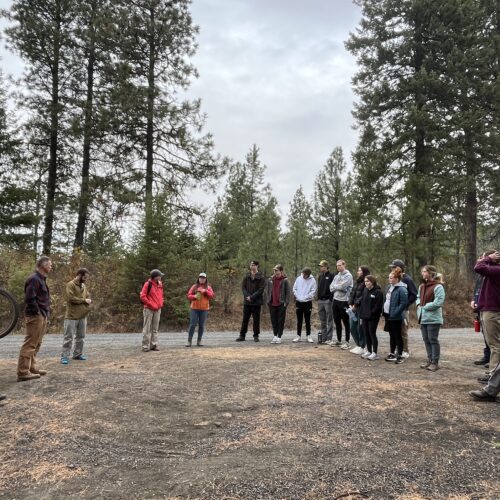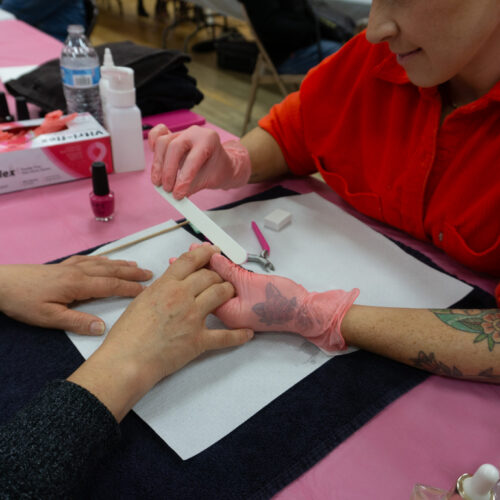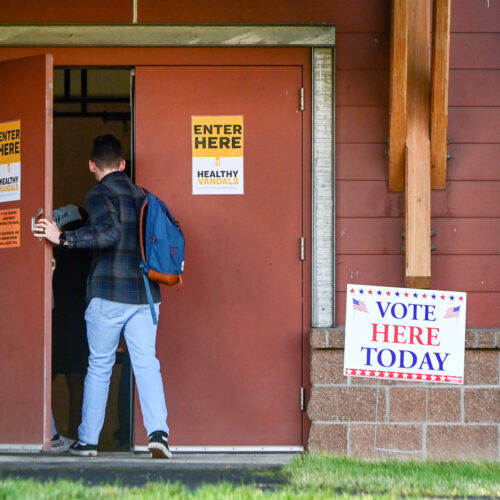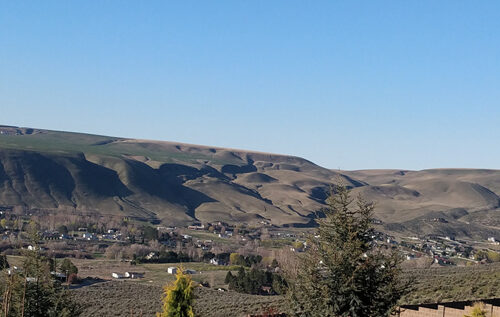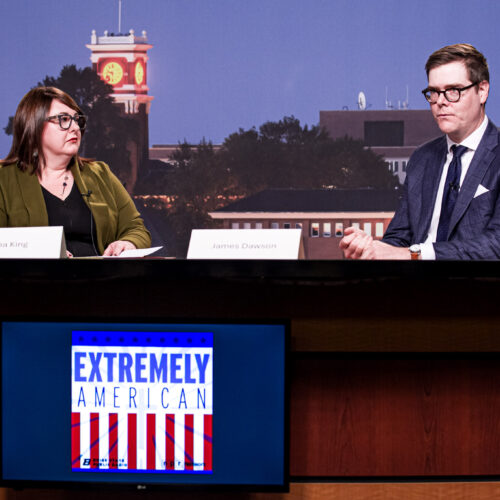
“Dr. Christmas Tree” working to prevent disease in Northwest conifer trees
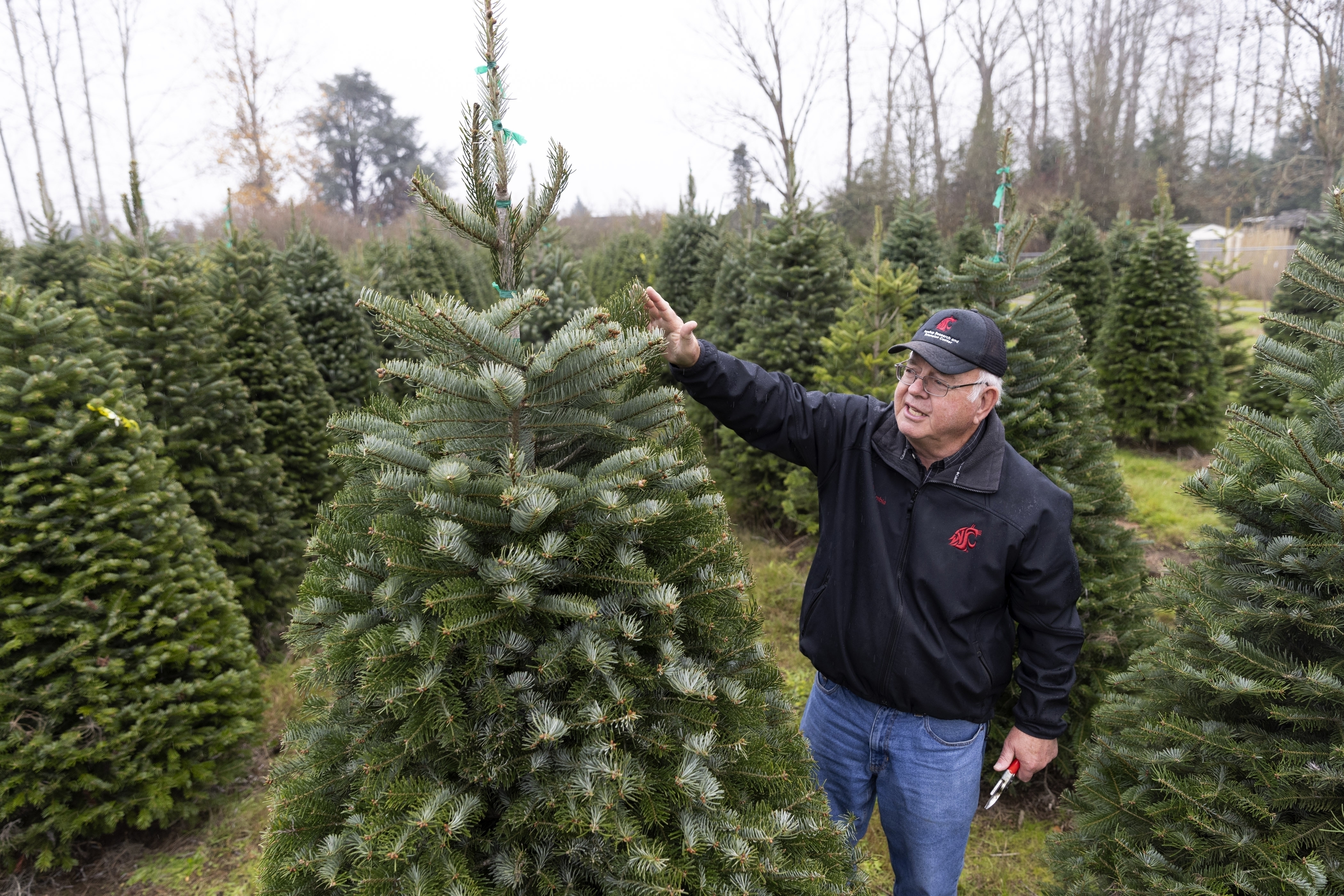
Listen
(Runtime :54)
Read
More Northwest Christmas trees have fallen victim to disease in the last couple years and scientists are trying to find out why.
“There’s a variety of diseases that affect the production of Christmas trees, many of them are caused by fungi,” said Gary Chastagner, a plant pathologist at Washington State University.
Chastagner has been working with Christmas tree growers for nearly 50 years, whether they have 10 acres or 3,000. To Northwest growers, he’s known as “Dr. Christmas Tree.”
Two organisms have been causing problems for Northwest Christmas trees, Chastagner said. One is a fungus called Armillaria.
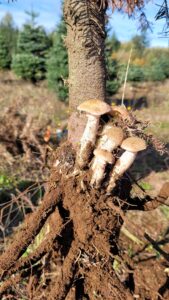
Fungi sprouts from the base of a Christmas tree, believed to have died from a root-killing disease. (Credit: Washington State University)
“Armillaria is called the honey mushroom, and it’s a fairly common forest pathogen,” Chastagner said. “But it’s not typically seen in Christmas trees.”
Armillaria tends to be most aggressive on trees that are stressed, Chastagner said. It attacks the roots, going up to the crown of the tree and killing the tissue underneath the bark, Chastagner said.
“It kills the roots and basically starves the tree,” Chastagner said. “The other organism that we’re working with is a fungus-like organism called Phytophthora.”
Phytophthora is a water mold, producing swimming spores around the roots of trees oversaturated with water. When the Phytophthora spores find root tips, it infects them, Chastagner said.
These problems could be tied to a changing climate, Chastagner said. More rain in the spring and fall the past few years have caused very wet soils, allowing water to pool in the roots and fungi to flourish.
In addition, high temperatures in the summer have been stressing Northwest fir species, Chastagner said, which leaves them more susceptible to disease.
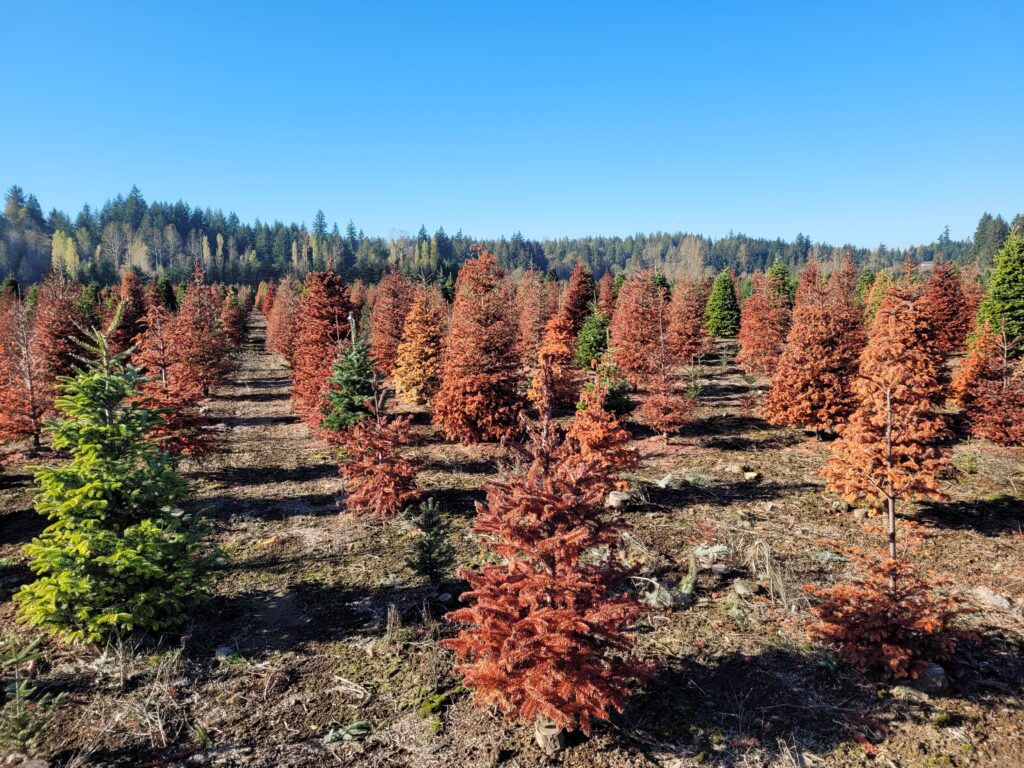
Christmas trees at a farm in Western Washington and other growing sites in the Northwest were killed by root diseases. Chastagner and his team plan to survey tree farms in 2024 to find out more about the pathogens affecting ornamental conifers. (Credit: Gary Chastagner / WSU)
“People may not know that Christmas trees are usually a non-irrigated crop,” Chastagner said. “They are very sensitive to drought conditions that we have.”
Among the most affected trees are Pacific Northwest Noble Firs, Douglas Firs and Fraser Firs, the most popular varieties for Christmas trees, Chastagner said.
Christmas trees are big business in the Pacific Northwest. Noble Firs and Douglas Firs grown in the region account for almost two thirds of Christmas trees grown in the United States, Chastagner said.
Oregon is number one for producing the most Christmas trees in the United States. Washington is ranked as sixth. Northwest trees are then transported throughout the West to places like California and exported to Hawaii, Japan, China, Hong Kong and the Philippines.
“We’re talking about millions of Christmas trees being produced in the Northwest,” Chastagner said.
Chastagner and his team are planning several research studies in 2024. He said he wants to sample a broader number of plantations and tree growing sites in Oregon and Washington, that may or may not have problems with pathogens.
“Growers have to deal with changing climatic conditions like this all the time,” Chastagner said. “They are very resilient. They figure out how to deal with things and they do need research help. That’s where we come in.”
Chastagner and his team are also working with plant pathologists at the U.S. Forest Service.
“With our research colleagues, we are currently conducting collaborative research to determine if Armillaria pathogens can be managed through increasing natural biological control agents in the soil,” said Mee-Sook Kim, a research plant pathologist at the Pacific Northwest Research Station in Corvallis, Oregon. “Information from these studies may also be applicable to Christmas tree farms.”
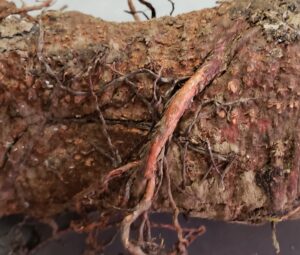
Dark-colored, stringy Armillaria rhizomorphs curl around the roots of a dead Fraser fir Christmas tree. (Credit: Marianne Elliot / WSU)
Prevention methods, such as removing infected tree stumps, improving soil drainage to avoid too much moisture, and applying management methods to increase tree vigor are what growers can do to reduce losing tree inventory, Kim said.
Scientists also are working with Eurasian tree species such as Turkish Fir that might be more resistant to the pathogens and changing weather conditions affecting trees in the Northwest, Chastagner said.
“Some trees may be more tolerant to moisture stress and drought stress,” Chastagner said. “Those are the trees that growers could utilize to avoid the problems that we’re seeing now and in the future.”


